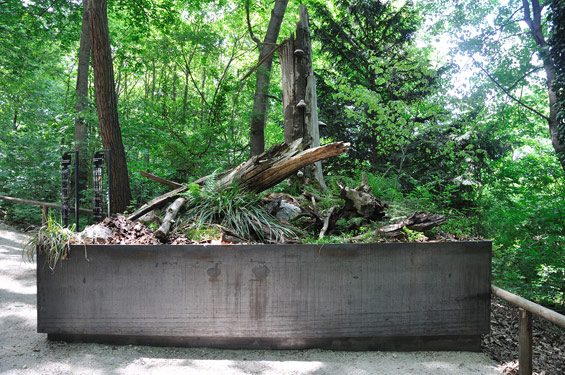
The four landscape installations replace the former nature trail through a piece of forest in Vienna’s Zoo Schönbrunn and reflect four different aspects characterizing woodlands: dynamics, diversity, sustainability and cultural significance. The aim of the concept is to arouse interest through sensuous experience, to simultaneously stimulate reflection and communicate knowledge. Through this contemporary dialogue, the real experience remains central.

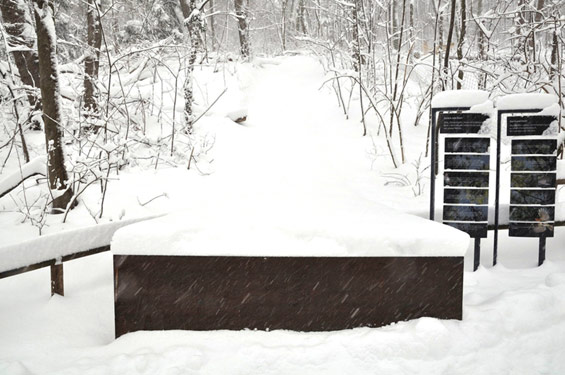
Station 1: Close to the Roots … “How long does it take for a forest to grow mature?”
In order to understand the dynamics and the pace of woodlands an extruded patch of forest is cleared and left alone to develop. Succession with its sequence of states is a booster for biodiversity by offering niches to inhabit to a wide range of organisms. Over the course of many years, the initial bare soil will be covered by alternating plant societies until eventually a tree will close the hole in the forest canopy. Visitors returning in annual or shorter intervals can experience a steady but surely slow growth and develop a feeling for the span of life of a forest.
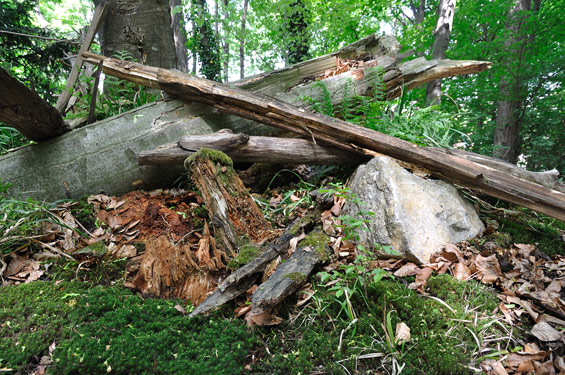
Station 2: In Detail …“How does an untouched forest look like?”
Raised from the floor, in order to enable a detailed study of the habitat, a four by four meter steel box displays a mature primeval forest with its typical richness in micro-structures and traces is re erected true to detail.
A sculptural stump, broken by storm, acts as a visual centre piece. The soil is covered by decomposing woods, fungi, mosses and shrubs, giving an impression on the enormous structural and biological diversity of this truly rare habitat.
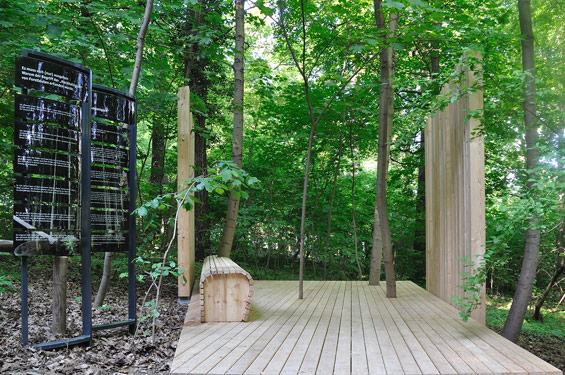
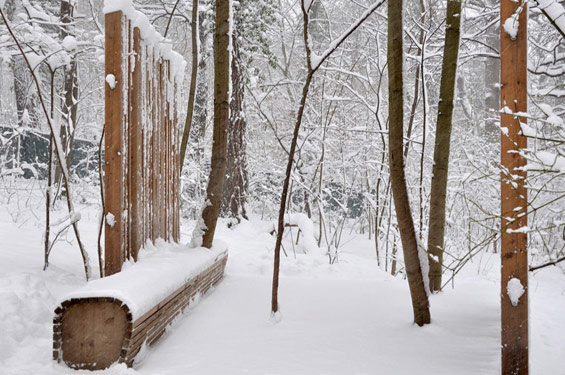
Station 3: Wood Room … “What role play forests as a sustainable resource?”
The third installation depicts the concept of sustainability as a dense interlacing between human and forest habitat. Visitors are invited to enter a wooden room, a blend of forest and housing space, in order to investigate the dense interlacing between human and forest habitat.
The construction material timber is being juxtaposed to the resource. Both are interwoven, enabling trees to grow through the floor, the bench and the walls. Thereby a penetrable space is created where visitors are surrounded by vegetation and still protected by a defined room.
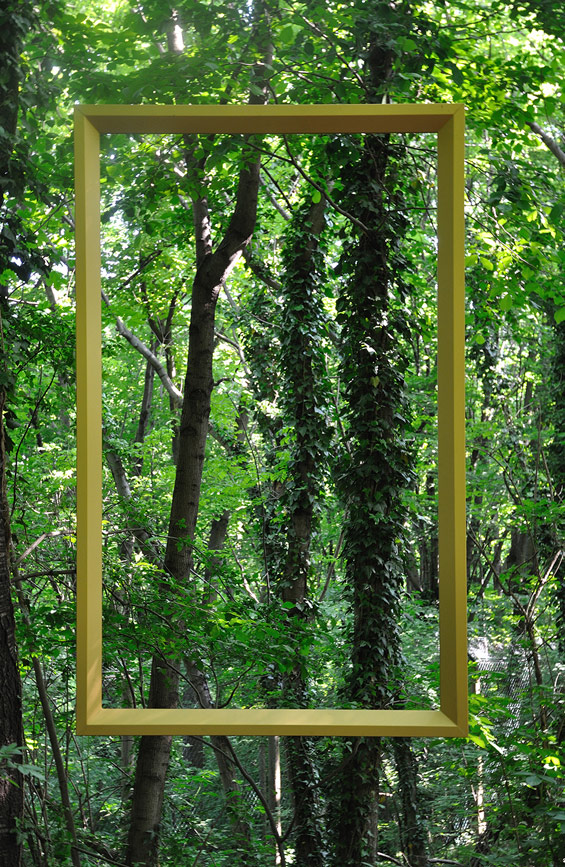
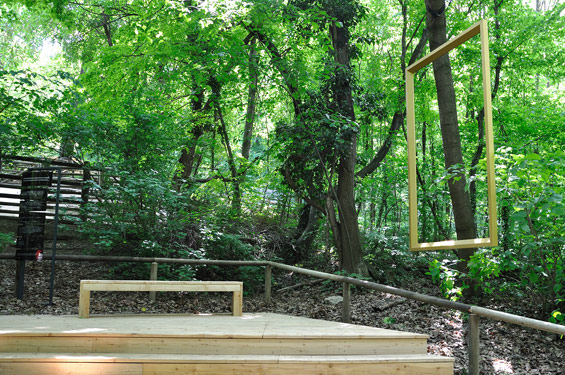
Station 4: Cultural Forest … “What cultural role plays a forest?”
The fourth installation is inspired by an exhibition scenery alluding the cultural layers of woodlands. Similar to a gallery space, picturesque views into the forest are spotlighted by suspended golden frames. The imaginary quality of woodlands as landscape typology as well as their cultivation by forestry are part of human culture and an immanent part of human identity.
Our Forest – Four landscape installations to communicate woodlands | Vienna Austria
Concept & Design: Lindle_Bukor / studio for landscape design
Client: Vienna Zoo and Austrian Federal Forests ÖBf
Carpenter: Pichler & Biringer, Forchtenstein, Austria
Metal works: Georg Blaas, Breitenfurt, Austria
Scale: Four permanent installations, each appr. 16 to 30 sq. m.
Location: Vienna, Austria
Opening 2012
Images | Lindle Bukor OG except as noted as Daniel Zupanc.
Text | Lindle Bukor OG


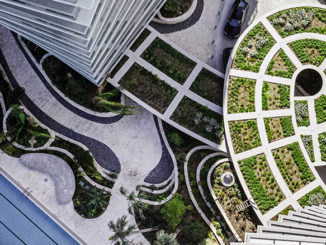
I do find it useful for temporary exhibits to be used in forests to highlight the broad range of connections and understandings between people and plants.
I hope this kind of installation will attract more people to venture into nature. Given the rapid decline in forests across the world it is important to save the remaining ones any way we can, even if that is as a sort of ‘museum’. I like how Station 2 gives an idea of the complexity and fragility of these landscapes. We cannot walk through them without changing them, nor can we surround them with cities and expect the quality to last.
Please inform us as to why the nature trail was deemed unnecessary? This installation makes me sad. Is this the way of the future? Wilderness on display as if in a museum? I do not understand the context of this creation.